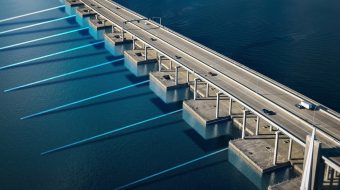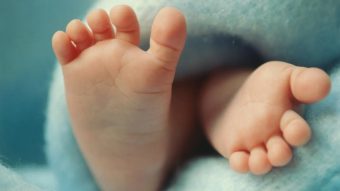
Dogs' TV viewing habits vary by personality
Jul. 17th, 2025 11:00 amAstronomers map tangled, supersonic filaments in distant interstellar gas cloud
Jul. 17th, 2025 10:51 amWeaker Atlantic currents bring more oxygen to tropical ocean's shallow depths
Jul. 17th, 2025 10:51 amHow a triatomic molecule works off excess energy
Jul. 17th, 2025 10:36 amMurderbot TV
Jul. 17th, 2025 09:26 amBut, otherwise, I'd give the series a big thumbs up. It was more than decently faithful to All Systems Red and many of the changes were improvements. I have more to say about it, some of it slightly less than glowing, but since it's still quite new, I will save much of my critique for in-person panels and private discussions.
We also ended up watching The Ying Yang Master Zero, which I really loved. It features a semi-historical figure Abe no Semei, who like King Arthur, just gets a lot of play.
I'd talk more about it, but I need to run off to take Shawn back to the knee doctor. She's develop a new pain in her knee and so we're off to make sure it's nothing serious.
Museum of Perfume in Mexico City, Mexico
Jul. 17th, 2025 10:00 am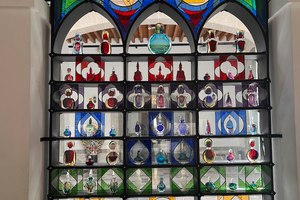
Located in an ancient colonial house in the historical downtown of Mexico City is the museum of perfume.
The collection includes more than 4,000 items, including original bottles from some of the oldest perfume companies, equipment for making perfumes, and related cosmetics. Displays present brilliantly colored bottles, and explanations on the process of perfume-making since its beginning in ancient Egypt.
The museum has workshops in which you can create your own scent. The museum provides enough context for you to understand why some perfumes, like Opium, were banned, and others, like Chanel No. 5, have been so enduringly popular.
Visitors can learn how the economy and fashion dictate what sort of scent a society might prefer.
Round 177 Theme Poll
Jul. 17th, 2025 07:46 amPick the next theme of fancake:
Femslash
4 (40.0%)
Marriage of Convenience
5 (50.0%)
Worldbuilding
1 (10.0%)
Rapport: Friendship, Solidarity, Communion, Empathy, by Martha Wells
Jul. 17th, 2025 07:34 amMy favorite thing about this series is Murderbot and ART and their favorite humans. My least favorite thing is all the descriptions of walking around. This has both. I would have liked it a lot better if it had spent half as much time describing the path they took through the spaceport facility and twice as much time exploring Iris and Peri's relationship because that's the important stuff, right? I wanted to learn more about their relationship and the ways Peri changed after meeting Murderbot and what Iris thinks about those changes. Here I was thinking ART was always like this, but it seems Murderbot might have had more of an effect on ART then it could have known.
Instead: Transit schedules. :(
Read it for free at Reactor.
firmament
Jul. 17th, 2025 07:20 amAnother old one, going back to the early 13th century, taken this time from Latin firmāmentum, the sky, originally support/prop, from firmāre, strengthen/support/make firm + -menutum, noun suffix of agency ("that which"). Firmāmentum was used in the Vulgate Bible to translate the Septuagint Greek steréōma, foundation/framework, from stereós, solid/rigid. This in turn was used to translate Hebrew rāqī́aʿ, the barrier used in Genesis 1:6 to separate the heavenly waters from the earth below, which has a root sense of being beaten out thinly -- which is an interesting image for what Elohim was doing.
---L.
Iran Has a Mass-Deportation Policy Too
Jul. 17th, 2025 09:49 amLast month’s war with Israel and the United States lasted only 12 days, but Iran is likely to feel its consequences for years. The country’s intelligence services failed to prevent Israel from assassinating many top military officials, and now the Iranian regime is lashing out in all directions. It has handed down harsher sentences to political prisoners, harassed members of religious and ethnic minorities, and executed dozens of people. But one community has suffered perhaps more than any other: Afghan migrants in Iran, who number as many as 6 million by some estimates.
In the past few months, Iran has deported hundreds of thousands of Afghans—The New York Times reports 1.4 million since January—sending them back across the 572-mile border the two countries share. This process began well before the Israeli bombing campaign. Back in March, Iranian authorities warned Afghans that many of their temporary residence papers would soon cease to be valid. But the war seems to have accelerated the campaign. Iran deported more than 100,000 Afghans within a few days last month. In June alone, at least 5,000 children were separated from their parents. The security forces have haphazardly picked up thousands of Afghans and even people suspected of being Afghans. Some are legal residents who were deported before they could produce their papers. In some cases, authorities have torn up residency papers. Every day, thousands are boarded onto buses bound for Afghanistan. Both the Taliban administration and the United Nations migration officials there have complained about the sheer number of migrants appearing at the border.
[Arash Azizi: Iran’s stunning incompetence]
Deportation camps near Tehran are now filled with thousands of Afghans. Shargh, a Tehran daily, has published many harrowing reports on the deportation effort. With no time to change out of their slippers or work clothes, some Afghans scramble to get their relatives to bring them their papers before they are expelled from the country. An elderly woman told reporters that her husband, who is deaf, had lost his documents at one of the camps and is now being deported. Another woman lamented that her family had lived in Iran for 58 years and were now forced to leave the only country they knew. According to the latest instructions, only Afghans in certain migrant categories are allowed to stay. Temporary documents that once allowed others access to certain services are now void. Many Afghans have been deported before being able to collect the considerable security deposits held by their landlords (Iran’s inflation is such that renters typically put down a large lump sum as a deposit in lieu of paying a monthly rent).
Iran is justifying the mass deportations with the spurious claim that Afghans assisted Israeli operations in Iran. The authorities have paraded Afghan migrants on state television, airing their undoubtedly coerced confessions of guilt. In one clip, an Afghan migrant is shown confessing to the head of the judiciary that he filmed Iran’s air-defense systems, presumably for Israel. The authorities claim that these Afghans were paid via cryptocurrencies.
Such cynical ploys fool very few. Social media abounds with jokes about how the regime is so humiliated by Israel’s battering, all it can muster is a desperate crackdown on Afghans.
Iran has been home to millions of Afghans for decades. They are a long-standing part of Iranian society, commonly working in demanding jobs such as construction. The two countries share many cultural similarities and a lingua franca. Many Afghans even hail from regions, such as Herat, that were intermittently part of Iranian territory until the 19th century. Many more consider themselves part of the broader Iranian cultural sphere and grew up on Persian literature. Yet they’ve long been treated as an underclass. Until 2015, most Afghan children were not allowed to register in schools. The majority of Afghans has to regularly renew residence permits without any path to permanent status. Although Afghan women can be naturalized if they marry Iranians, this option is not open to Afghan men. In fact, even children born to such unions are denied status. And without status, Afghans have problems completing basic tasks, such as opening bank accounts or renting apartments.
Anti-immigrant sentiments in Iran have only intensified since the Taliban’s capture of Kabul in 2021 produced an influx of irregular migration. The Islamic Republic is thus using this moment of crisis and heightened nationalism to push a program likely to be popular. During last year’s presidential election, candidates competed by offering anti-migrant programs. One even promised to build a wall on Iran’s eastern border. The winning candidate, Masoud Pezeshkian, promised to block the borders to prevent further migration from Afghanistan. Nor is this a partisan issue. One of the very few causes that brings together many pro- and anti-regime Iranians is opposition to Afghan migration.
One conspiracy theory that has currency in anti-regime circles holds that the Islamic Republic has brought in Afghans to engineer the country’s demographics, making the society more conservative and recruiting Afghans to beef up the repressive forces. Little evidence supports this theory, but Tehran does have a history of politically using the Afghan refugees. It dispatched tens of thousands of Shiite Afghans to fight its sectarian wars in Syria and Iraq. Other anti-migrant voices invoke the familiar trope that immigrants are behind violent crimes, even though there is no evidence of Afghans in Iran committing a disproportionate share of such crimes. In late May, a young Iranian woman was killed by a taxi driver, her body left in the desert, and some Iranians tried to link the crime to Afghan migrants, even though the driver, who confessed, was Iranian.
The deportations are especially hard on Afghan women because the Taliban happens to be running arguably the world’s only regime more misogynistic than the Islamic Republic. Under the Taliban’s rule, Afghan girls are barred from studying after sixth grade, and women cannot travel or appear alone in public. Before the Taliban sent them home, more than 100,000 women were studying in Afghan universities. Some fled to Iran in the hope of continuing their education.
If Iran had a more rational immigration policy, it could use the talents of these women and others fleeing the Taliban. Many have Ph.D.s and other professional qualifications. Afghans born in Iran or those who have spent decades in the country should have been offered a path to permanent residency and naturalization. Instead, Iran’s migration policy has long been chaotic and arbitrary, and the country tolerates a sometimes shocking degree of crude racism. Not only is there almost no path to legal citizenship, but No Afghans allowed signs are known to appear at shopping centers, and some Afghans have suffered racist assaults.
Fereshteh Hosseini, an Afghan Iranian actor, appeared at the Karlovy Vary film festival last week. Donning a traditional Afghan hat, she took the opportunity to criticize Taliban rule and advocate against the mass deportation of Afghans from Iran. Hosseini is perhaps the best known Afghan Iranian in Iran, in part because she’s married to a famous Iranian film star, but her status has not shielded her from racist abuse. In response to the viral clip of her speech at Karlovy Vary, a major conservative Iranian website attacked her, accusing her of “treason.”
[Read: Afghan women have been brought back in time]
There have always been Iranians who oppose the country’s discriminatory policies and the society’s casual racism toward Afghans. Almost 20 years ago, I volunteered in southern Tehran every weekend, teaching Afghan children who were then deprived of the right to education. The classes were organized by an Iranian NGO and taught by young activists like me. In recent years, Iranian sociologists, activists, and filmmakers have come to advocate for Afghan migrants. This work has made a difference. In 2015, the regime relented and allowed Afghan children to go to school.
Some Iranians are raising their voices now. The Nobel Peace Prize laureate Narges Mohammadi has attacked the mass deportation of Afghan migrants as contradicting “humanitarian principles” and Iran’s “international obligations.” A group that tracks executions has warned about an uptick in executions of Afghans in Iran. An op-ed in Shargh criticized the “extremism” of the anti-migrant campaign and called for a more rational policy.
The Iranian expulsions are part of a global trend. Much like the United States and Europe, countries such as Iran, Turkey, Lebanon, Pakistan, and South Africa have cracked down hard on migrants. The lot of Afghans is particularly bad. In Turkey, they’ve suffered from the broader anti-migrant backlash targeting Syrians. From September 2023 to January 2025, Pakistan sent more than 800,000 Afghan migrants home. Millions anxiously remain in Pakistan. Much like those still in Iran, they are caught between the draconian rule of the Taliban and a world ever less friendly to migration.
Finders Keepers
Jul. 17th, 2025 03:25 pmThe premise being about writers and unpublished writing appealed to me and I liked how the story unexpectedly connected to the case from the first book.
But it felt very dragged out, there were lengthy flashbacks detailing information that had already been revealed, and the characters I had been so looking forward to spending more time with - Hodges, Holly and Jerome - were barely in the first half, and only really got properly involved towards the end.
The bad guy was also rather a repeat of the bad guy from the first book - bad relationship with terrible mother, major superiority complex, wildly offensive attitudes to things - which was a bit tedious.
It did really pick up towards the end, though, with a very tense and exciting climax that had me shouting at my phone - and actually siding with the bad guy at one point!
And I liked how the epilogue mirrored the epilogue from book one.
I'm not sure how I feel about the introduction of hints of the supernatural - but I'm still keen to find out where the story is going overall, and I still think Will Patton is one of the best audiobook narrators around - so I'll definitely complete the trilogy.
Book Review: Queer Person
Jul. 17th, 2025 10:21 amHe grows up an outcast, called Queer Person and considered a fool by most of the people in the village, although Granny and a few friends learn to talk to him with their hands (using, I think, an expanded version of the Plains sign language) and recognize his talent for building things. In his teens, a bout of heatstroke causes a couple of hard worm-shaped objects to fall out of his ears, enabling him once again to hear. Granny explains that sometimes fevers plug the ears like this. She suggests that he should hide his new abilities until he’s mastered spoken language.
Meanwhile! We veer into Problem of Tomboys territory! The boys of the camp are riding a yearling buffalo, which came into camp as a pet but has now grown too big for comfort. One of the boys dares the girls that none of them will dare to ride it, at which point the chief’s daughter Singing Moon rides the buffalo across the plains, jumping off just in time before it rejoins the buffalo herd.
Impressed by her bravery, Granny and an older warrior suggest that Singing Moon join the next warrior raid - in disguise, of course, at least at first. After all, Granny did it herself in her youth, and her presence rallied the warriors to great feats of bravery! And so does Singing Moon’s, but the greatest feat of all is her own success in counting coup on an enemy, knocking him off his horse and taking the horse for a trophy.
Singing Moon is of course the love interest, and the next bit of the book involves Queer Person proving that he can match her in bravery - not through the traditional route of going into battle, but by saving Singing Moon’s kidnapped little brother. Queer Person sneaks into the camp of a rival tribe, where he’s captured, but they’re so impressed by his bravery in coming into their camp unarmed that they decide to subject him to tests rather than kill him outright, ending in a test where he has to battle an old warrior who has decided that he’d like to go out gloriously in single combat with this brave outsider.
The old warrior is, of course! Queer Person’s father.
Then Queer Person heads home, returns the kidnapped child to his family, reveals he can talk, sleeps for three days, and then marries Singing Moon.
Ralph Hubbard (also known as “Doc” Hubbard) was a professor who promoted Native American culture, and he clearly put a ton of research into the background of this story. (He also later had an asteroid named after him. And he was the son of Elbert Hubbard, who wrote “A Message to Garcia,” founded an Arts and Crafts community called the Roycroft Shops, and died in the sinking of the Lusitania.)
Ranked: The World’s 30 Top Research Universities
Jul. 17th, 2025 12:12 pmThe World’s Top Research Universities 2025
This was originally posted on our Voronoi app. Download the app for free on iOS or Android and discover incredible data-driven charts from a variety of trusted sources.
While some universities are best known for their undergraduate programs or vibrant campus life, others stand out for their research excellence and international academic reputation.
This chart shows the top global research universities, as ranked by U.S. News & World Report.
What is the Top Research University in the World?
Below, we show the top 30 global research universities of 2025 and their overall score.
| Rank | University | Country | Global Score |
|---|---|---|---|
| 1 | Harvard University |  U.S. U.S. | 100.0 |
| 2 | Massachusetts Institute of Technology |  U.S. U.S. | 97.2 |
| 3 | Stanford University |  U.S. U.S. | 94.5 |
| 4 | University of Oxford |  UK UK | 88.3 |
| 5 | University of Cambridge |  UK UK | 86.8 |
| 6 | University of California Berkeley |  U.S. U.S. | 86.4 |
| 7 | University College London |  UK UK | 86.2 |
| 8 | University of Washington Seattle |  U.S. U.S. | 86.1 |
| 9 | Yale University |  U.S. U.S. | 86.0 |
| 10 | Columbia University |  U.S. U.S. | 85.8 |
| 11 | Imperial College London |  UK UK | 85.2 |
| 11 | Tsinghua University |  China China | 85.2 |
| 13 | University of California Los Angeles |  U.S. U.S. | 84.9 |
| 14 | Johns Hopkins University |  U.S. U.S. | 84.4 |
| 15 | University of Pennsylvania |  U.S. U.S. | 84.0 |
| 16 | Cornell University |  U.S. U.S. | 83.6 |
| 16 | Princeton University |  U.S. U.S. | 83.6 |
| 16 | University of California San Francisco |  U.S. U.S. | 83.6 |
| 16 | University of Toronto |  Canada Canada | 83.6 |
| 20 | National University of Singapore |  Singapore Singapore | 83.3 |
| 21 | University of California San Diego |  U.S. U.S. | 83.2 |
| 21 | University of Michigan |  U.S. U.S. | 83.2 |
| 23 | California Institute of Technology |  U.S. U.S. | 82.9 |
| 24 | Northwestern University |  U.S. U.S. | 81.5 |
| 25 | Peking University |  China China | 81.1 |
| 26 | University of Chicago |  U.S. U.S. | 81.0 |
| 27 | Duke University |  U.S. U.S. | 80.7 |
| 28 | Nanyang Technological University |  Singapore Singapore | 80.6 |
| 29 | University of Sydney |  Australia Australia | 79.9 |
| 30 | University of Melbourne |  Australia Australia | 79.8 |
Harvard topped the list as the best research university in the world with a perfect score of 100.
It ranked first overall for a number of metrics, including global research reputation, publications, total citations, and number of publications that are among the top 10% most cited.
The world-renowned university has one of the largest endowment funds in the United States.
Harvard has also recently made headlines for being hit by sweeping cuts from the Trump administration, including the cancellation of approximately $100 million in federal contracts, the freezing of around $2.3 billion in research grants, and the revocation of its ability to host international students.
Overall, U.S. universities make up 19 of the top 30 global research universities, followed by four UK universities. The U.S. consistently is home to many of the world’s top universities overall.
University of California, San Francisco is the only exclusively graduate-level institution in the top 30, focused solely on health and biomedical sciences.
Methodology
The U.S. News & World Report Best Global Universities rankings includes 2,250 research universities across 105 countries, based on 13 research metrics, and an Academic Reputation Survey. You can read more about their methodology here.
The 13 indicators are listed below (weight in brackets):
- Global research reputation (12.5%)
- Regional research reputation (12.5%)
- Publications (10%)
- Books (2.5%)
- Conferences (2.5%)
- Normalized citation impact (10%)
- Total citations (7.5%)
- Number of publications that are among the 10% most cited (12.5%)
- Percentage of total publications that are among the 10% most cited (10%)
- International collaboration – relative to country (5%)
- International collaboration (5%)
- Number of highly cited papers that are among the top 1% most cited in their respective field (5%)
- Percentage of total publications that are among the top 1% most highly cited papers (5%)
Learn More on the Voronoi App 
To learn more about top universities, check out this graphic that visualizes America’s top universities.
(no subject)
Jul. 17th, 2025 07:04 am- hadn't been updated since 2021, and half of the ones I looked at were no longer offering a transit program;
- the ones that were still active were general HR programs, and mainly wanted to provide health insurance with transit a distant second. Oh, and they were geared towards 20 employees or more. I am doing this for me only.
Two days ago, I repeated the process I've been following since 2023. Unlike all the other times, I got a "rejected" notice. WTH? I tried a couple different things (checking the upload file to make sure it was in the right format, making sure the credit card hadn't expired, etc.) and finally, called the transit help desk yesterday.
I got bounced around several times. Each time the person asked "So the problem is you can't log on?" No, the problem is that your system is rejecting my invoice. Finally I was transferred to the apparent coding firm - which is based in London.
I got a call at 3 AM this morning telling me it was resolved. When I got into work I tried again. Same result. It's before 5 PM there, so I called and told them "No, it bloody well is not resolved." Oh, and please note I am in California and there's an 8 hour time difference.
Good Trouble Lives On
Jul. 17th, 2025 10:07 amYou can attend a virtual rally:
https://www.mobilize.us/john-lewis-actions/event/803723/
Good Trouble Lives On: Virtual Rally happening today at 6pm Eastern/5pm Central/4pm Mountain/3pm Pacific and you can join us here: https://www.youtube.com/@WeArePeoplePowerUnited/streams No worries if you are late or can't make it, we will share the video as well.
The Omni Parker House: Inside the History of Boston’s Most Iconic Hotel
Jul. 17th, 2025 09:15 amCharles Dickens once stayed here on a reading tour for ‘A Christmas Carol.’
Listen and subscribe on Apple Podcasts, Spotify, and all major podcast apps.
Dylan Thuras: Hi, everyone. We have something pretty different for you today. This is a live episode of the podcast, as in we did it with real people in the audience. So a little while ago, I was asked to speak at the WBUR Festival in Boston. I was trying to figure out what I wanted to talk about, and then I stumbled across this hotel, the Omni Parker House Hotel. It is the longest continually operating hotel in America, big historical hotel in Boston. It’s downtown. It’s near the Freedom Trail. And I realized that there was not just one, but multiple great stories to tell about this hotel. There’s just an insane amount of history that flows through this hotel. So I invited Susan Wilson, who is the hotel’s official historian, to come and talk with me in front of this live audience at the WBUR festival. So that is what you are going to hear today. Also, I get to have my little, like, an Oprah moment at this live podcast thing. Maybe you’ll be jealous. It was really fun.
This is an edited transcript of the Atlas Obscura Podcast: a celebration of the world’s strange, incredible, and wondrous places. Find the show on Apple Podcasts, Spotify, and all major podcast apps.

Dylan: I’m Dylan Thuras. Today with me is Susan Wilson, the best historian in Boston, which is saying something. Susan, thank you for being here.
Susan Wilson: Thanks for inviting me.
Dylan: Susan, you hold this incredible depth of knowledge, obviously about the hotel, but about Boston history in general. How did the Parker House come into your world?
Susan: Well, when I was a kid in New Jersey, my mother used to make Parker House rolls. It was a big deal. And I went to Tufts University in Medford. And when I was old enough, we used to come in on Sundays, because in Parker’s restaurant, they had this large fountain filled with tomato juice, just flowing and flowing. Then at noon, because of blue laws, they would pour vodka into it. And so we came at noon. And we would drink there.
Dylan: Yeah. Which, by the way, have you talked to them about bringing this back? Because the bloody mary fountain is like, you know, that’s pretty good. Anyway, I need to ask everyone a question. Has anyone in this room seen the 1995 film, Four Rooms? Is there a single—
Susan: One back there, one back there.
Dylan: Okay, so everyone else, I’m sorry, you’re gonna have to leave the two people who raised your hand, you will get a special presentation. Okay, no. So there’s this movie in the ’90s called Four Rooms, about four stories in four hotel rooms. And they’re each directed by a different director. Tarantino did one of them. Robert Rodriguez did one of them. So in this scenario, we are doing four rooms, but four locations from one hotel here in Boston, spread across history. They each end up shaping what is to come in Boston, in our country, in really interesting, radical ways. So we are going to do our four rooms at the Omni Parker House Hotel. So the year that we’re starting in, Room One, is 1865. So only a decade after this hotel has opened. And Room One, the man practicing pistols in the alley. April 6, 1865. And this is as you can see, historical hair horror in the style of Tarantino. So, exterior: a small alley besides the Omni Parker House Hotel. The alley is a shooting gallery. The street is slick with rain. And people are talking excitedly in the streets because the Civil War looks to be ending any day now. The streets are already draped in bunting. In just a few days, fireworks will be bursting over Boston. Orators like Frederick Douglass will pack Faneuil Hall. And standing there in a pool of shadow besides the Omni Parker House Hotel, a lone figure lurks. Also, I want to warn you that all four of these stories are basically going to be setups of some version of, “and you will never believe who that boy grew up to be.” And so, when I ask who this person is, and Susan answers, I need everyone to gasp. So every response, we will all gasp together in surprise and shock. Okay, so back to the alleyway. This young man rounds a corner into the narrow alley besides the Parker House to practice his shooting. But this handsome young man begins performing odd feats of dexterity. He’s practicing shooting backwards underneath his leg. He seems to be preparing for something. So Susan—everyone ready to gasp? Who was this mysterious figure in the alleyway?
Susan: The figure was John Wilkes Booth.
Dylan: He was in the alleyway. John Wilkes Booth, the dastardly John Wilkes Booth. Okay, so what was John Wilkes Booth doing in Boston and doing in this alleyway next to the hotel?
Susan: Okay, so John Wilkes Booth was one of three brothers who were actors. And they all periodically worked together. And even a year before, John Wilkes Booth had done some performing in Boston. And at this time, his brother, Edwin, was in a play. And John Wilkes was staying at the Parker House. And he was really popular. John Wilkes was considered, he was very handsome. He was known for swordplay and dashing roles.
Dylan: Yes. And he was like an action hero, basically.
Susan: Oh, totally action. Yeah, yeah, yeah. And so the thing is, the reason the papers noticed this about his shooting in the alley, it was very common at that time, if you were going in a coach, a stagecoach, or a horse-drawn anything from town to town, you might get attacked. And so many, many gentlemen, if not most, carried pistols with them in order to be safe. And therefore, most hotels had in their basements or nearby, a shooting gallery where you could practice. So that’s what he was doing. It was no big deal. Everyone knew him and went, oh, there’s the handsome John Wilkes. However, it was the weird way he was practicing, like these weird gyrations that got it reported in the newspapers. Then, eight days later … He went to Washington and did the deed.
Dylan: Yes. In just a few days, the Civil War would be over. Three days later, Lee surrenders. And eight days later, John Wilkes Booth assassinates Lincoln. And what was the evidence that this was a long time coming? Because in retrospect, it seems like that maybe this was not John Wilkes Booth’s first time at the Omni. And it seems that maybe there had been actually that this, the Omni Parker House had ended up being—or then, the Parker House—had ended up being a place where he had come before, maybe with other kind of plans in mind.
Susan: Oh, absolutely. It was by far the loveliest and most popular hotel in town. And so if anyone of any significance came to town, they stayed there. But he had met there, we know for sure, a year before with a bunch of basically people who were Confederate spies. And at the time, they were plotting something perhaps to kidnap Lincoln. This idea of actually assassinating Lincoln, nobody had a clue. His brother, Edwin, didn’t have a clue. They knew that they disagreed, Edwin was a very strong Unionist. And he, the first time he ever voted in his life was for Lincoln. So it wasn’t like he was involved in politics a lot, but he really believed in the Union. And John Wilkes really thought, you know, this Lincoln person is terrible. I think he wants to be a king. Can you imagine that? A president wanting to be a king?
Dylan: Yeah. He seemed to believe that Lincoln was a tyrant.
Susan: Yes, absolutely. Absolutely. But nobody foresaw the murder.
Dylan: Yeah. And there’s a kind of extreme juxtaposition here because the city is actually starting to celebrate the end of the Civil War already at this point.
Susan: Absolutely.
Dylan: And then there’s this handsome actor practicing strange—I think we don’t appreciate this part of the story, which is like that he was already famous before he did. We all know him as being famous for this assassination. But that it would be as if like—I don’t know, I’m trying to think of a kind of like—Vin Diesel assassinated the president or something, you know, you’d be like, what? Like, it has a strangeness to it that I think is like we’ve lost a little bit.
Susan: But chances are, we wouldn’t remember him if he hadn’t done the deed.
Dylan: Right. Because he was a kind of—
Susan: He wasn't that good an actor.
Dylan: Okay, so that’s room one. Let’s move on to Room Two. Just two years later on a snowy December day, a grand historical Christmas movie in the style of Steven Spielberg. This is a very good—this is a feel good movie. So interior: beautiful, brand new hotel room, specifically, I believe, rooms 138 and 139.
Susan: It was a suite, actually.
Dylan: Yes. Okay. So they were like together and hanging on the wall is a large mirror and pacing back and forth in front of the mirror is a man in a black suit and he’s pacing. His hair is fuzzing out to the sides. It’s got this kind of bushy, untamed goatee. And the year is 1867. It’s nearly Christmas. And the man is sort of repeating to himself again and again, this thing that he’s trying to make sure he’s going to be able to present in the most grand way possible. So it’s time for the big reveal. Everyone get ready. Susan, who is this Victorian fellow in this fancy hotel room trying to practice for his big presentation?
Susan: It is Charles Dickens.
Dylan: Amazing. Okay. So Charles Dickens. What is he doing in this room? What is he—why is he here and what is he up to?
Susan: Why he’s here is he’s on a reading tour. Dickens only came to the United States twice, once in 1842 and second time in 1867. Basically, he made a lot of money from readings. We don’t think of—when we think of doing authors’ readings, we think of somebody standing and reading a book and people asking questions. But he was a trained actor. And so what he was doing in front of this giant six foot mirror was practicing, making a theatrical presentation of his readings. So practicing voices and gestures and all that. And people actually came. They had to have guards kind of like he was like a rock star. They have guards to keep people out who wanted to see him practicing or grab his fur coat and have a little piece of Dickens. And it would be easy for him to have 2,000 people in the audience for a reading. And there would be lines out the door. His first public reading was December 2nd, 1867, after he had read it at the Parker House.
Dylan: And what is he reading? I don’t think we’ve actually said what he’s reading.
Susan: Oh, he’s reading A Christmas Carol.
Dylan: And for the first time in America, right?
Susan: First time in America. And so it was and people adored A Christmas Carol. And so to see the actual author reading this was huge. There were lines out the door. People were scalping tickets to get in. Not a lot—you know, like Taylor Swift—but it was pretty big.
Dylan: It was big.
Susan: It was big. Yeah.
Dylan: And one thing I didn’t realize that you talked about was that in some ways, A Christmas Carol and this presentation here in Boston at the Parker House Hotel was a sort of like a rebranding of Christmas, or a reform of what Christmas had been. So maybe you could talk a little bit about what Christmas had been and how this was actually sort of a different, fuzzier approach.
Susan: Okay. Or it was part of a movement. Basically, okay, so Boston was settled by Puritans who were trying to purify the Church of England. So they cleaned everything out of the church. They cleaned there. No music, no stained glass, no no incense, nothing, just everything plain and simple. And the Puritans basically they banned Christmas. In fact, there was a period where it was technically illegal and you would be fined if you were seen practicing Christmas because it was too papist. It was too much like the Roman Catholic Church. A lot of people got drunk. In fact, very often people of lower socioeconomic classes would get drunk and go to people of upper socioeconomic classes who were drunk, and they would say, you have to give me stuff or I’ll leave.
Dylan: They would demand figgy pudding.
Susan: Exactly.
Dylan: They would actually be like, no, seriously, guys. Five drinks in—
Susan: And I won’t go until I get some. Absolutely. Yeah. So it was kind of a nasty thing. And it was associated with—just it wasn’t a warm and fuzzy family thing. And it was basically, Christmas started growing up again in the South first. But it wasn’t until like the middle of the 19th century that it began emerging in the Boston area again. It took us that long to get out of puritanical times. And little by little, it was starting to come back. But the Christmas Carol with this whole idea of, you know, family and redemption and being good and loving and giving things. This was kind of like the capstone of that.
Dylan: And even the kind of cross-class, the class consciousness of that story sort of gets at some of the problems of Christmas previously. You know, we’re all going to kind of like—
Susan: We can do it together.
Dylan: Yes, we can do it together.
Susan: Exactly. So this really put the cherry on the cake or whatever.
Dylan: Okay. And how does Dickens do presenting A Christmas Carol? How is it received here in America?
Susan: Oh, people were blown away. The first public presentation was right around the corner, Tremont Temple, which is still there to this day. And that was the one where 2,000 people showed up. But everybody—people laughed, they cried, they were just completely blown away. He had crowds everywhere he went.
Dylan: Yeah. What was it? You said he only came twice.
Susan: Yes.
Dylan: In 1842. And then …
Susan: 1867 to ’68, yeah.
Dylan: What was Dickens’ overall impression of America? Like, what do we know about how he felt about it?
Susan: The first time he had very mixed feelings, and he actually wrote about those mixed feelings. And we were really—I mean, we were not happy with what he wrote.
Dylan: He described it, he was like, this place is not good.
Susan: Yeah. Actually one of his least favorite things in 1842 was he went south and he saw slavery. And he thought that was just awful. But one of his favorite things was he went up to Lowell and saw the Lowell Mill girls working in extraordinary, wonderful conditions. At the time, it was true. And of course, he spent much of his life writing about the horrendous factory conditions in Britain. So he was quite taken by that. They had a finite number of hours. They had beautiful places to stay. They were safe. They even had their own publications. They had a magazine called The Lowell Offering. And the girls went to lectures. They met famous people. They met Dickens when he came up there. When he left, they gave him a pile of all The Lowell Offerings that they had made so far. And we know he said that he read them all. Curiously, when he went home, he was supposed to be writing something else. And he actually ended up writing A Christmas Carol. And we know now because of some research done by a BU professor, Natalie McKnight, that many of the stories included stories of ghosts from the past and people revisiting the past and some things that repeated in A Christmas Carol. And that was from the Lowell girls.
Dylan: So the first visit inspires A Christmas Carol, maybe in certain ways. And he comes back over 20 years later and actually performs it here.
Susan: At least inspires.
Dylan: It is now time for room number three, unquestionably my favorite. Okay, on to Room Three. The Cracked Table in the Bakeshop, quirky rom-com in the style of Wes Anderson. So interior: Parker House Hotel Bakeshop, dawn, winter of 1912. The kitchen is a hive of early morning activity. It’s depicted in whimsical Wes Anderson style detail, copper pots hang in perfect rows, chefs in crisp white uniforms move in choreographed precision like characters on a tiny stage. The center of it stands our hero of this room, a young Vietnamese baker in his early 20s looking at the camera as he stands at this marble baking table, well used with a visible crack running along an edge. Flour floats through the air as sunbeams come across the windows. He’s kneading dough for Parker House rolls. Okay, everyone ready to gasp? Who was that young baker?
Susan: Ho Chi Minh.
Dylan: Ho Chi Minh, a baker at the Parker House Hotel in 1912. And actually, okay, I’m very excited about this part. Hang on, you start, actually start talking about the Parker Rolls because there’s a fun side story here.
Susan: Sure. Okay. So raise your hand if you’ve had a Parker House roll. Okay.
Dylan: I have Parker House Rolls here.
Susan: We have them for everybody. Fresh baked at the hotel this morning. Okay, spread them out. So as wonderful as Parker House rolls are, they are light, they are fluffy, every second ingredient is butter. And they are very popular, but nowadays there are lots of light and fluffy things that you can eat. However, given when these first appeared, which was in the late 1860s and 1870s, it was a big deal because colonial and early American bread, well, you know how artisanal bread today is like hard on the outside, then soft inside? Well, colonial and early American bread was hard on the outside and hard on the inside. There are confirmed cases at Harvard in the dining halls in the 1800s of there being food fights, okay—and people throw food in food fights—of somebody throwing a loaf of bread at someone else, hitting them in the eye and losing their eyesight. Now, for example—
Dylan: Yeah, this is actually quite nice.
Susan: That wouldn’t hurt you at all, okay? So it was a giant thing.
Dylan: These were like a revolution.
Susan: A revolution in eye injury all alone.
Dylan: Yes, in soft bread and non-dangerous food fight experience.
Susan: Absolutely.
Dylan: So in 1912, Ho Chi Minh would have been baking these, baking a Boston cream pie.
Susan: Both of which were invented at the Parker House we’ve mentioned.
Dylan: And so what is Ho Chi Minh doing in Boston at the Parker House? What’s going on here?
Susan: Okay, so Ho Chi Minh, which is not his real name, his real name was Nguyen Sinh Cung. He had so many pseudonyms, okay? While he was at the Parker House, he was known as Van Ba or sometimes just Ba. And he was among the people who thought that imperialism was bad and they wanted to get the French out of French Indochina. He also believed in world communism. So basically this guy had three great loves or three great missions, one of which was getting freedom for French Indochina second of all spreading world communism, and third of all baking. And these were all very important and he was very skilled. He left the Saigon area in the middle of 1911. It’s very mysterious because it’s hard to track. But we know that he was cooking in the ships, the transatlantic ships, which are very popular. He worked in New York, in Boston, in the South. But they were always after him because of the trouble he was creating.
Dylan: He was already on the run from the French, right?
Susan: Oh, he was already on the run. But you have to make a living while you’re doing that. And later on, he studied with Escoffier at the Carleton in London. So he was a serious baker, you know, he’s really good.
Dylan: And he came to the U.S. not just being on the run, but he also had some kind of political aims or goals potentially while here in Boston and in America, yeah?
Susan: Right. In Boston at that time, he lived in a neighborhood that was mostly African-American and Jewish, new immigrants. He was interested in exploring and finding out about anti-Semitism, about African-American efforts, which eventually became the NAACP and other efforts like that. Women’s suffrage was huge at the time. Unions were developing and there were strikes. And all of this fed into things that he cared about. So he wanted to intersect with all of this. And the year he was here was huge. I mean, 1912, there were so many new things. Fenway Park opened that year. I think the Boston Fish Pier opened. A lot of stuff was happening that he would intersect with. Now, I know that you think that when he came here, he got interested in the American Revolution.
Dylan: Well, I have a reason to believe this.
Susan: Okay, so why do you think that?
Dylan: When he writes the Vietnamese Revolution, he opens with a quote from our Declaration of Independence. And he later contacts many different presidents, essentially saying, I am doing what you did. I am trying to throw off the yoke of this colonizing oppression. Can’t you see in me a reflection of yourself? And basically he’s saying, we don’t necessarily have to be enemies. There could be understanding between us. So this is why I think there’s some, at least, maybe it came later, maybe it came after the Boston period, but there’s some connection.
Susan: No, he definitely did that later on. But a lot of those guys that he contacted were in the 1930s, ’40s, ’50s, I mean even Kennedy in the ’60s. So I don’t have any … Again, it’s so …
Dylan: There’s no evidence of this.
Susan: There’s no evidence. And the thing is, he couldn’t have walked on the Freedom Trail. It didn’t exist. Not till 1951. So we’re off by four decades.
Dylan: Right.
Susan: Just checking.
Dylan: My vision of him looking up at a statue of, I don’t know, you know …
Susan: Sam Adams.
Dylan: Probably not quite right. But …
Susan: You know, you may be right, but there’s so little known.
Dylan: So what is the work environment at the Parker House like? Besides being a baker, what is kind of the scene there? Who’s he working with? Who are his coworkers in the space?
Susan: Well, many of the waiters there are Irish, have been from the beginning, a lot of the head waiters. But they’re also getting to be international because by the 20th century, a lot of African-American workers were working there. And part of that is because after slavery ended and after the Civil War, many African-Americans moved north and many of them got jobs on the Pullman trains, these very luxurious trains, and got to be exquisitely trained as waiters and things like that. So they were in huge demand. So he was probably … He was working with other people who were considered underdogs or not …
Dylan: Irish, African-American.
Susan: Exactly.
Dylan: These are his colleagues in the kitchen.
Susan: Not the rich Brahmins on Beacon Hill.
Dylan: That’s right. And so, you know, has there maintained any connection between Vietnam and the hotel? You know, this is kind of something that sort of came to light a little bit later, like, oh, it really was him and he really was here.
Susan: Right. Definitely since the late 1980s, there have been delegations from Vietnam visiting. This past year, they visited, I think, twice and the prime minister came. I mean, it’s a big deal. And they come and they want to see the table. Okay. So the table in the bake shop, it’s a marble table and one corner is cracked off and it’s like people go in and go, man, can’t you afford a new table? You’re the Parker House. It’s like, no, Ho Chi Minh worked on this table, so we’re keeping it even with the broken corner.
Dylan: This is the special table.
Susan: Yes.
Dylan: So we are going to move on to room number four, the Boy on the Bar Table. Susan tells me it’s technically not a bar, but I said, do they serve drinks? They do serve drinks. So it’s close enough.
Susan: He likes alliteration.
Dylan: I do like alliteration. So the Boy on the Bar Table, February 11, 1923, Irish political drama in the style of Martin Scorsese, exterior. It’s evening in Boston and a young boy stands outside the press room of the Parker House hotel. It is his grandfather’s birthday. The boy’s grandfather is a big deal. The boy’s grandfather is the former mayor of Boston and represents this continually growing power of the Irish in Boston politics. Though “no Irish need apply” signs may still be hanging around town, the boy’s grandfather won control of the whole town, becoming the first American born Irish Catholic to be elected mayor in not just Boston, but all of America. So outside these revelries, a party goer approaches the boy and asks him what he thinks of his grandfather’s big party. And the boy, without hesitation, speaking with a distinct Boston accent, calls his grandfather the best grandfather a child could ever have. And said with such confidence and charm, the party goer scoops the boy up, brings him into the party, sets him on a table and asks him to give the speech about his grandfather. Again, it would be the first of many, many very famous speeches. I bet you guys have some guesses about who this is. So … we’re still going to gasp. Susan?
Susan: This little six-year-old boy is John F. Kennedy.
Dylan: Yes. Oh my God. It’s JFK.
Susan: And this is his first public speech.
Dylan: Right. Six years old, standing on the table at his grandfather’s birthday celebration. So who is JFK’s grandfather?
Susan: John Fitzgerald, better remembered as Honey Fitz. Who ran against people like James Michael Curley and was part of just a huge number of Irish Americans who became involved in Boston politics.
Dylan: How did that happen? Because obviously there was this resistance to, you know, there was this bias against the Irish all over the place. How were they able to move into politics sort of effectively here?
Susan: There’s a lot of theories about that. I mean, his great, great grandfather came here in 1849 and the 1840s was the beginning of the potato famine and other economic woes in Ireland. So many Irish came here. First of all, many came here because it was a port city and there were actually affordable places to stay back then. And so they came in, some of them had already been involved in politics in the old country, but the other thing was, unlike other immigrants, they already spoke English. So it was easy to get involved in things that other people were still struggling with the language. The other thing is, they had strong clan-like connections. And if somebody wanted to run for something, there was huge support behind them.
Dylan: Yes. And it also seems like the Parker House was quite the political hotspot generally. Like why was it? Why did it become this kind of focus of political activity?
Susan: Diagonally across the street is Old City Hall. So that’s where the mayors were. And that was when City Hall was a pretty building. And that was City Hall until 1969. Up the street is the Gold Dome State House. So it was a logical place. I mean, you had to be lovely and have great, you know, great restaurants and be very welcoming and all that, but it was conveniently located.
Dylan: And it wasn’t just politicians who came through there. There were also some interesting, unsavory characters who stopped by the hotel at various points.
Susan: You mean besides John Wilkes Booth?
Dylan: Besides John Wilkes Booth. Yes. Definitely including John Wilkes Booth.
Susan: Yeah. Diagonally across the street—so if you’re on School Street and you’re facing, first there’s King’s Chapel, then there’s Old City Hall. Then there’s this thing called the Niles Building. In 1920, this guy was running a booming business there. His name was Charles Ponzi.
Dylan: His scheme is still around today.
Susan: It is to this day. And so, you know, it was very convenient to come over and dine and …
Dylan: Yeah. Meet some wealthy people who might be interested in this—
Susan: And borrow their money.
Dylan: —never ending supply of money. Okay. So obviously, you know, that moment at Honey Fitz’s birthday celebration was JFK’s first political speech at the Parker House, but it wasn’t his last. What are some of the other big JFK moments that have happened at the Parker House?
Susan: Well, the whole Kennedy family always frequented the place, including JFK. And when he got back from World War II, the hero in PT-109, he decided to run for Congress. And so he made the Parker House the place that he announced that, and headquarters to begin that. So he gave his first speech there. And then several years later, in 1953, we still have a little marker there by the table in Parker’s Restaurant. Table number 40 is where he proposed to Jacqueline Bouvier. And then shortly thereafter, in the press room, they hit his bachelor party there, too. But so they were there for political reasons, for personal reasons. The Kennedy family just had a long love affair with the Parker House.
Dylan: One interesting thing I came across in doing some of this research is that then, as we mentioned before, actually, Ho Chi Minh and JFK actually end up sort of—they don’t meet. I don’t think they ever meet in person. But they end up having some interaction and correspondence. Ho Chi Minh writes to JFK at a certain point. And it’s interesting. Early on in the ’50s, JFK went to Vietnam and ended up basically testifying in front of the Senate, saying—this is his quote—“In Indochina, we have allied ourselves to the desperate effort of a French regime to hang on to the remnants of empire.” He basically says, like, this is nuts. Like, we can’t be party to this. This is not going to work out. And obviously, it didn’t go that way because the kind of fear around communism spreading becomes—
Susan: The whole domino theory thing.
Dylan: Becomes much stronger than any resistance. But it’s just interesting to see these two people who come through the Parker House at different moments in their lives and sort of then interact again later on. Anyway, Susan, this has been so incredible. You know, the history of Boston and really of America flows through the Parker House and flows through you. Thank you so much for joining us today for this. Best historian in Boston. That was Susan Wilson, the resident hotel historian for the Omni Parker House Hotel. And just an absolute delight of a person. She is not just the hotel historian, she does—she’s a historian generally, and she does a ton of other things, including photography. You should go check out all her books and works on her website. We will put a link in the show notes. Susan Wilson, best historian in Boston.
Special thanks to Kameel Stanley and all of the folks at WBUR and CitySpace for helping out with this live show. It was a blast. I hope we can do it again sometime.
Listen and subscribe on Apple Podcasts, Spotify, and all major podcast apps.
This episode was produced by Johanna Mayer. Our podcast is a co-production of Atlas Obscura and Stitcher Studios. The people who make our show include Doug Baldinger, Chris Naka, Kameel Stanley, Manolo Morales, Amanda McGowan, and the amazing Kate Walsh. Our theme music is by Sam Tindall.
Summer Vegetable Pasta Salad
Jul. 17th, 2025 01:30 pmAs soon as the warm weather of summer rolls around, all I want to eat are crunchy vegetables and cold pasta salad. This Summer Vegetable Pasta Salad is my go-to with a medley of colorful vegetables, a tangy homemade vinaigrette, and plenty of ways to customize it based on what I have on hand or what I’m craving that day. Plus, it holds up great in the fridge, so it’s perfect for meal prep!

“The dressing on this pasta salad is fantastic. I made slight modifications to the veggies and used what I had in the garden (fresh peppers instead of roasted) and I added some sautéed chicken to make it a main dish. It was delicious and a great, cooling summertime meal!”
Lee Anne
Easy Recipe for Summer Vegetable Pasta Salad
This summer vegetable pasta salad is absolutely perfect for potlucks because it makes a huge batch, and it goes with everything. Not to mention it holds up well to travel and is still super delicious after it’s been sitting on that picnic table for a bit. 😉 I made a really basic tangy vinaigrette using olive oil, red wine vinegar, Dijon, minced garlic, and seasonings, and it seriously ties everything together.
BUT if you don’t have a well-stocked pantry, any basic bottled Italian dressing, like we use in our classic pasta salad recipe, will do well. You could also choose something like a Caesar dressing (not creamy-style) or a Greek vinaigrette. Go with what you love or have to hand!

Summer Vegetable Pasta Salad
Equipment
- Medium Bowl
- Large Bowl
- Medium Pot
Ingredients
Vinaigrette
- ½ cup olive oil $1.40
- ⅓ cup red wine vinegar $0.49
- 1 Tbsp Dijon mustard $0.06
- 1 tsp dried oregano $0.14
- 1 garlic clove minced, $0.06
- ¾ tsp salt $0.03
- ¼ tsp black pepper freshly cracked, $0.04
Salad
- 12 oz. bowtie pasta $0.98
- 2 Roma tomatoes 215g, $0.40
- 1 yellow squash 275g, $0.90
- 1 zucchini 200g, $0.65
- 1 crown broccoli $1.83
- ½ cup fresh parsley chopped, $0.54
- 1 12oz. jar roasted red peppers drained, $2.13
- ½ red onion 130g, $0.54
Instructions
- Gather your ingredients.
- Make the vinaigrette first. Whisk together the olive oil, red wine vinegar, Dijon, oregano, minced garlic, salt, and pepper. Set the dressing aside.
- Cook the bowtie pasta according to the package directions (boil 7-10 minutes or until tender), then drain in a colander. Rinse briefly to cool the pasta, then let it drain well.
- While the pasta is cooking and draining, prepare the vegetables. Chop the tomatoes, squash, zucchini, broccoli, and parsley. Slice the roasted red peppers (drained) and the red onion.
- Place the pasta and chopped vegetables in the largest bowl you have. Give the vinaigrette a brief whisk, then pour it over the salad. Stir the pasta and vegetables until everything is coated in dressing. Give it a taste and add salt or pepper, if needed. Serve immediately, or refrigerate until ready to eat.
See how we calculate recipe costs here.
Nutrition
How to Make Summer Vegetable Pasta Salad Step-By-Step Photos

Gather all of your ingredients.
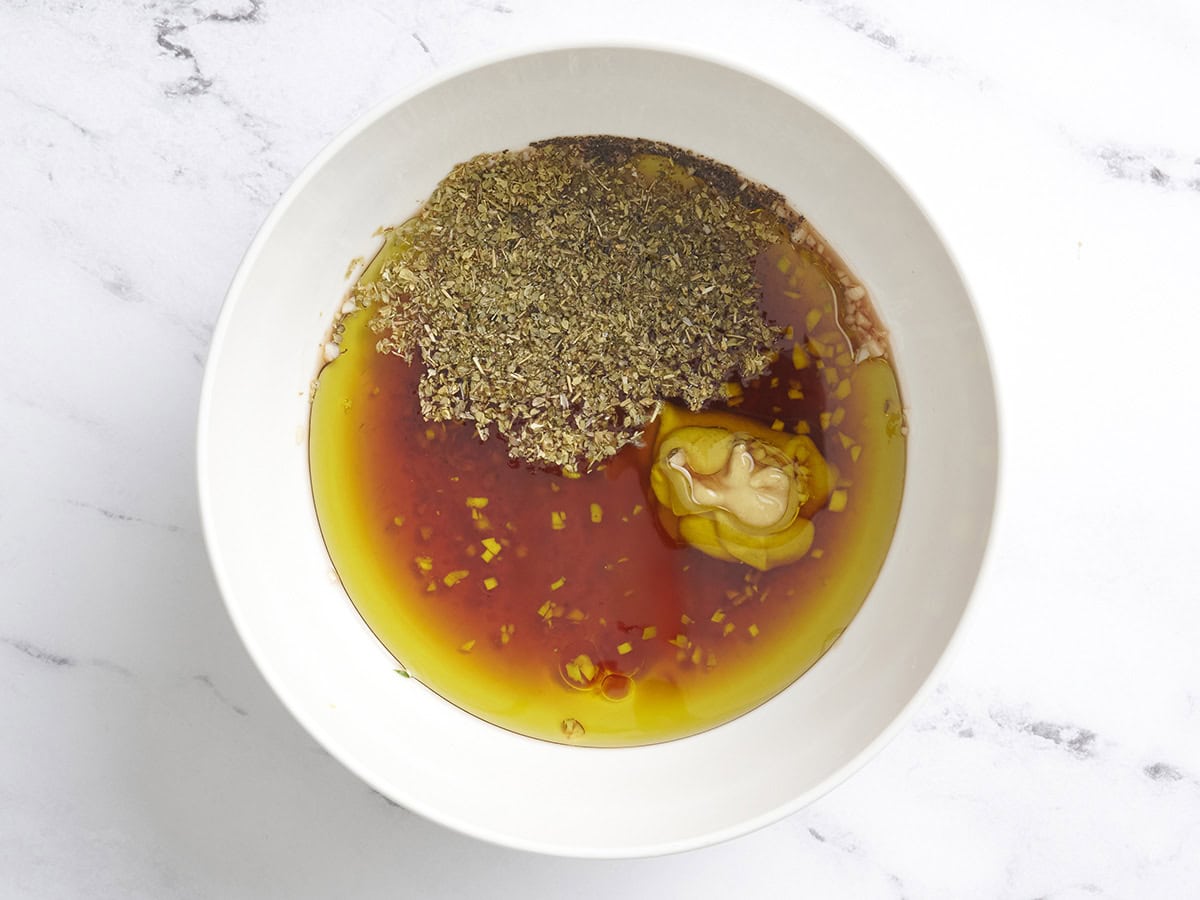
Make the dressing: Add ½ cup olive oil, ⅓ cup red wine vinegar, 1 Tbsp Dijon mustard, 1 tsp dried oregano, 1 clove of minced garlic, ¾ tsp salt, and ¼ tsp freshly cracked black pepper to a bowl.

Mix well to combine and set the dressing aside.
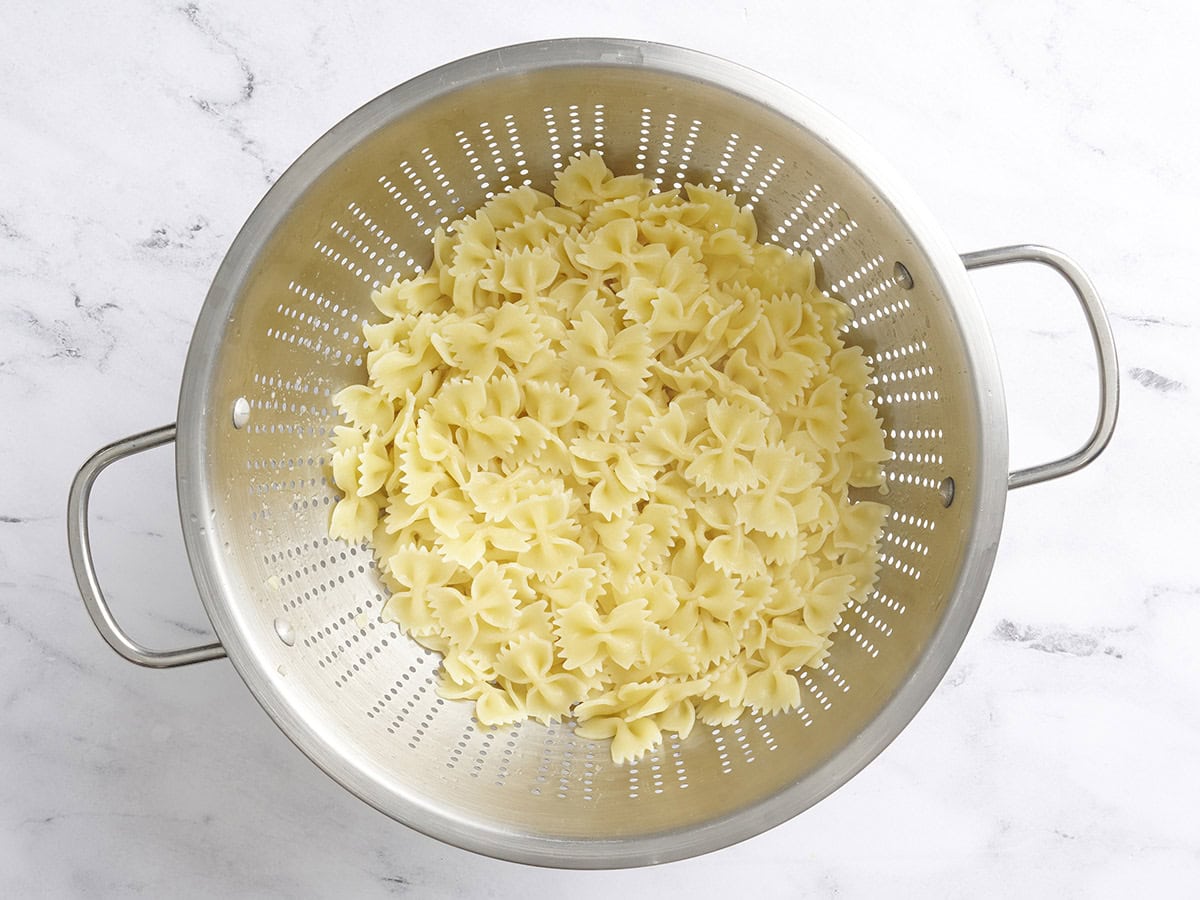
Cook the pasta: Cook 12 oz. bowtie pasta (or other short shaped pasta) according to the package directions (boil until tender, drain in a colander). Give the pasta a quick rinse to cool it off, then let it drain well.

Prep your veggies: While the pasta is cooking and draining, prepare the rest of the vegetables. Chop two Roma tomatoes, one yellow squash, one zucchini, and drain and slice one 12 oz. jar of roasted red peppers. Chop one crown of broccoli into small bite-sized florets and slice ½ of a red onion. Roughly chop ½ cup parsley.
Add all the prepped veggies and the cooled cooked pasta to a large bowl.

Assemble the salad: Give the vinaigrette a quick whisk, then pour it over the pasta and vegetables.

Stir until everything is really well coated in dressing. Give it a taste and add salt or pepper if needed. Serve immediately or refrigerate until ready to eat. Make sure to give it a stir after refrigerating and just before serving to redistribute the dressing.

What Else Can I Add?
I used fresh broccoli, zucchini, yellow squash, red onion, and parsley in this salad, then tossed in a few roasted red peppers just for fun. The great thing about a recipe like this is how flexible it is. You can mix and match based on what’s in season, what you’ve got in the fridge, or what your family likes best.
And if you want to turn it into more of a main dish or just boost the flavor, you’ve got options there too:
- Cauliflower
- Black olives
- Asparagus (grilled or sauteed asparagus)
- Chopped spinach
- Artichokes
- Grilled chicken
- Parmesan cheese
- Crushed baked tortilla chips
- Feta cheese
- Shrimp scampi
- Salami
- Mozzarella cubes or pearls
Serving Suggestions
I love serving this as a side for casual summer dinners. It’s great with sweet corn fritters and grilled okra for a super summery plate. It also pairs perfectly with a slice of savory tomato pie or with smash burgers at your next cookout. But honestly, I can’t think of anything this summer vegetable pasta salad wouldn’t go with.
Storage Information
Keep any leftovers in an airtight container in the fridge for up to 3-4 days. The pasta will absorb some of the dressing as it sits, so I recommend making extra if you plan to make it ahead. Give everything a good stir before serving. Don’t let this salad sit out for more than two hours (or one hour if it’s over 90°F) to keep everything food-safe.
More Summer Pasta Salad Recipes
Our Summer Vegetable Pasta Salad recipe was originally published 6/14/11. It was retested, reworked, and republished to be better than ever 7/17/25.
The post Summer Vegetable Pasta Salad appeared first on Budget Bytes.
How hot can Earth get? Our planet’s climate history holds clues
Jul. 17th, 2025 01:00 pmFor Sale: Post-Apocalyptic Bunker
Jul. 17th, 2025 05:21 am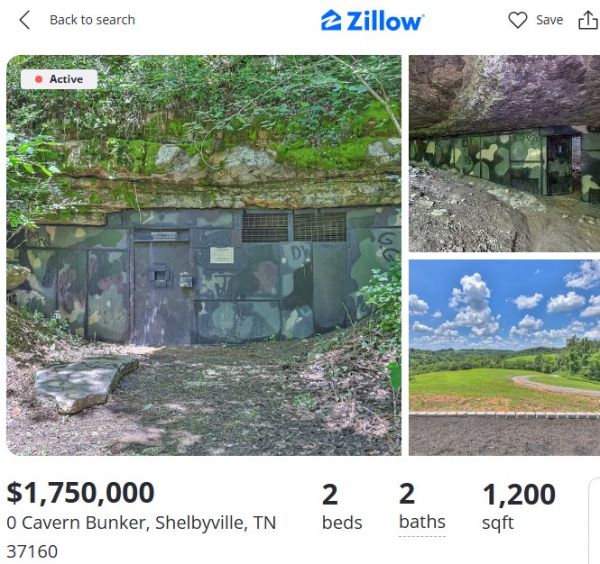
The premise of Zillow Gone Wild is that there will always be eccentrically-designed homes for sale. That's why keep browsing for gems like this 2-bedroom, 2-bathroom home in central Tennessee.
No, it's not a leftover from the Cold War or the Y2K scare. In fact, this bunker complex was built this year.
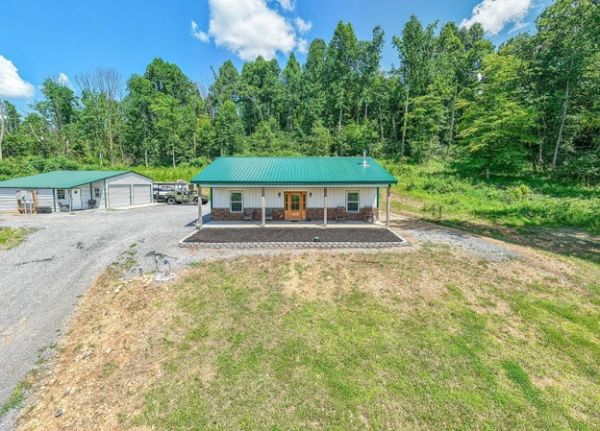
There's a house and a shop on 32 acres.

There's a bunker for your emergency needs.
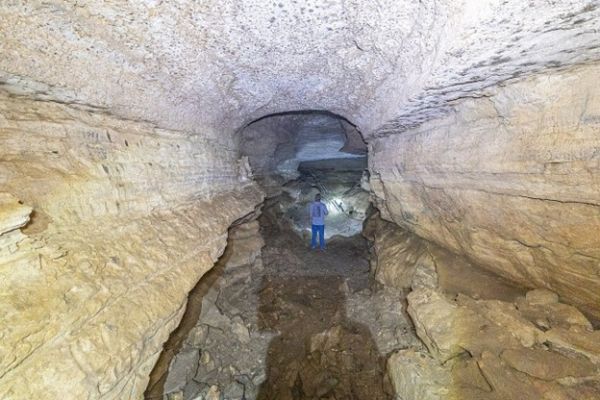
Behind the bunker are caverns.

The stream is lovely and can probably serve as an emergency water source (there's a household filtration system).

It really is a turnkey bunker. In addition to a chicken coop to provide food, there's a Hummer that is included with the house. So just write a check (a large one) and get access. If your timing is right, it won't even matter if the check bounces.
Barcelona could suffer heat waves up to 6ºC more intense by the end of the century
Jul. 17th, 2025 09:40 amWrite the story of a character’s first date. Did they want to go? What were they expecting? Di
Jul. 17th, 2025 08:58 amWrite the story of a character’s first date. Did they want to go? What were they expecting? Did it go the way they thought it would? Add as many details as you can.
Black Midwestern Studies: A Reading List
Jul. 17th, 2025 01:00 pmThe Midwest has long been cast as the symbolic heart of American identity—so-called “flyover country” of amber waves of grain and imagined whiteness. Indeed, national anxieties about what “Middle America” thinks are often a proxy for how white Americans in the middle of the country live. Within this framework, the lives of Black Midwesterners and other marginalized communities are routinely elided. Cities such as Milwaukee or Detroit—home to large Black populations—are frequently decried as “horrible” places, reinforcing dominant narratives that center whiteness and pathology, while Black Midwestern rurality remains underexamined in discourses about the region.
This reading list interrupts that narrative. It treats the Black Midwest not as periphery or demographic footnote but as a site of radical epistemic and ontological experience—a place where refusal, care, rupture, and geography converge. It offers a vision of Black Midwestern Studies shaped by the theory and praxis of Black feminist thought and activism.
The works collected here resist the assumption that the Midwest is a space of normative whiteness. Instead, they illuminate how Black Midwestern women, girls, and families make meaning through the emotional, affective, relational, and spiritual dimensions of life in the afterlives of slavery as theorized by Saidiya Hartman. Together, these texts offer a vision of the nascent field of Black Midwestern Studies—its questions, methods, and commitments as they take shape.
Weekly Newsletter
[contact-form-7]The list begins with foundational Black feminist works that examine the interior lives of Black women. It then turns to readings focused on Blackness in the Midwest: its cities and communities, histories of migration and labor, and the everyday negotiations of care, containment, survival, and refusal. By centering Black feminist theories of interiority, this list affirms that Black Midwestern Studies is grounded not only in region or demography, but in the emotional, intellectual, and relational worlds through which Black life in the Midwest is lived and imagined.
Barbara Smith, “Toward a Black Feminist Criticism,” The Radical Teacher, no. 7 (March 1978): 20–27.
Smith outlines the critical necessity for a Black feminist literary practice that takes Black women’s experiences, aesthetics, and political conditions as central rather than marginal. Smith’s intervention foregrounds the absence of Black women in both feminist and Black nationalist traditions and, in doing so, creates epistemic space for subsequent scholars to define Black feminist thought as a distinct intellectual tradition. This essay opens this list because it not only calls for the naming of a tradition but also insists that literary criticism rooted in lived experience is both valid and necessary. Smith’s argument that Black women write “against the grain of everything” reverberates throughout the following entries.
Patricia Hill Collins, “The Social Construction of Black Feminist Thought,” Signs 14, no. 4 (Summer 1989): 745–773.
Building on Smith’s call for a distinct critical framework, Collins offers a theory of Black feminist epistemology grounded in everyday experiences, community, and lived truth. She names the mechanisms through which Black women have produced and transmitted knowledge outside institutional settings, emphasizing that these epistemologies emerge under conditions of oppression but are not reducible to them. Collins’s concept of “outsider within” status becomes especially resonant when read through the context of the Midwest—a region where Black women’s knowledge and presence have often been rendered invisible.
Darlene Clark Hine, “Rape and the Inner Lives of Black Women in the Middle West,” Signs 14, no. 4 (Summer 1989): 912–920.
Hine’s foundational essay is a pivotal bridge between the theoretical and regionally grounded lived experience. Focusing on Black women in the Midwest during the Great Migration, she identifies a “culture of dissemblance”—a strategic masking of interior life developed as a protective mechanism against racialized sexual violence and social scrutiny. Hine not only offers a language for understanding Black interiority but also places the Midwest as a site where such strategies were both necessary and cultivated. She shows how Midwestern regional and historical conditions give shape to the production of interiority as a legitimate form of Black feminist knowledge.
Crystal Moten, “‘Kept Right on Fightin’…’: African American Women’s Economic Activism in Milwaukee,” Journal of Civil and Human Rights 2, no. 1 (Spring/Summer 2016): 33–51.
Moten grounds Black feminist theory in the material realities of the postwar Midwest, focusing on Black women in Milwaukee who navigated both gendered labor exploitation and racial exclusion while building coalitional grassroots economic resistance. Picking up from Hine’s insights on dissemblance, Moten introduces a politics of the everyday in which Black women’s labor, organizing, and affective ties become strategies of survival and assertion in a region where they are both hypervisible and undervalued. Here Milwaukee is a terrain of contested belonging, making this piece crucial to understanding how Black Midwestern interiority is entangled with both economic structure and community care.
Erik S. McDuffie, “The Diasporic Journeys of Louise Little: Grassroots Garveyism, the Midwest, and Community Feminism,” Women, Gender, and Families of Color 4, no. 2 (Fall 2016): 146–170.
McDuffie’s portrait of Louise Little—activist, Garveyite, and mother of Malcolm X—offers a generational and diasporic lens on Midwestern Black feminist praxis. Through Little, he illuminates how early twentieth-century Black women mobilized pan-African consciousness, feminist resistance, and grassroots organizing in cities like Omaha and Milwaukee. This essay extends the timeline backward while also globalizing the stakes: the Midwest becomes a node in a diasporic network of Black thought and activism. Positioned after Moten, McDuffie’s work frames Black Midwestern feminism not as reactionary or isolated but as globally entangled and ideologically generative, with community feminism rooted in both migration and memory.
Alex Moffett-Bateau, “Black Folks in Chicago,” in Redefining the Political: Black Feminism and the Politics of Everyday Life (Temple University Press, 2024), 81–108.
Moffett-Bateau sharpens the focus on the political dimensions of Black interior life, arguing that Black Midwesterners, especially poor and working-class Chicagoans, enact a form of everyday politics rooted in refusal, improvisation, and relational ethics. Her methodology is theoretical: she defines “the political” not as state-based action but as the affective and social practices of Black survival. This reframes previous entries in the list on labor, migration, and family as expressions of political life, challenging assumptions that Black Midwesterners are passive or apolitical. Following McDuffie’s emphasis on community feminism, Moffett-Bateau gives it harder edges: a feminism that speaks through mundanity, care, rage, and strategic withdrawal even as it remains structurally ontologically political.
Terrion Williamson, “Bla(n)ckness and the Illogics of Black Teenage Motherhood,” CR: The New Centennial Review 16, no. 2 (Fall 2016): 97–122.
Williamson’s essay is a critical pivot point in this list: it brings to the surface the psychic and representational violence enacted on Black Midwestern girlhood through the locus of teen pregnancy. She interrogates how both media and scholarly discourses conflate place, class, and sexuality to render Black Midwestern girls as unintelligible figures who “cannot be read.” Her conceptualization of bla(n)ckness names a condition of erasure that is not absence but overdetermination, a kind of visibility that hollows out meaning. Building on Hine’s culture of dissemblance, Williamson foregrounds a reading practice attuned to distortion, fantasy, and projection. Here Black Midwestern interiority becomes a site of illegibility, and that illegibility is theorized as politically and epistemically consequential.
Fred Moten, “The Case of Blackness,” Criticism 50, no. 2 (Spring 2008): 177–218.
Moten provides the ontological frame that haunts much of the preceding work: the notion that Blackness is not a category within being but a rupture of it. He challenges representational logic itself, arguing that Blackness precedes and exceeds visibility, capture, and normative being. Read through the lens of the Midwest—and especially in dialogue with Williamson—Moten helps us understand the ways that Black interior life may not be “hidden” so much as structurally disallowed from legibility.
Hortense J. Spillers, “Mama’s Baby, Papa’s Maybe: An American Grammar Book,” Diacritics 17, no. 2 (Summer 1987): 64–81.
Spillers’s landmark essay names the grammar of racial-sexual violence that underpins US modernity that echoes throughout this entire list. She theorizes the ungendering of the enslaved, the symbolic weight of the Black maternal figure, and the distortions produced by white cultural inheritance. In the Midwestern context, where respectability politics, migration, and structural abandonment converge, Spillers helps us understand how Black family life was already rendered grammatically incoherent, well before Daniel Patrick Moynihan attempted to correct it in the infamous The Negro Family: A Case for National Action, also known as The Moynihan Report (1965). Her work anchors the list’s deeper philosophical undercurrent: that language, feeling, and kinship have all been sites of epistemic theft and creative refusal.
More to Explore
Motherhood in America: A Reading List
Tiya Miles, “Beyond a Boundary: Black Lives and the Settler-Native Divide,” The William and Mary Quarterly 76, no. 3 (July 2019): 416–426.
Miles complicates regional imaginaries by unsettling the very boundaries that define Indigneous and Black life in the Midwest. She challenges settler frameworks that separate the histories of Native genocide from the afterlife of slavery, asking what gets lost when we fail to see these systems as intertwined. While the previous texts focus on interiority, dissemblance, and erasure within Black communities, Miles turns our attention to the politics of relational geography—not just where Black life unfolds, but what histories and structures that land already bears. Her essay invites us to think about the Midwest not only as a site of Black displacement or migration but also as a contested settler zone, where Black life is caught in complex logics of complexity and survival. This shift doesn’t unmoor this list’s focus on Black feminist interiority; instead, it forces us to confront how geography is itself a racialized and gendered construct.
David A. Nichols, Dawn E. Bakken, and Admiral S. Wieland, “There Are Many Midwests: A Roundtable on the 2021 Midwestern History Association Conference,” Indiana Magazine of History 117, no. 3 (September 2021): 208–220.
This roundtable captures the urgency and fragmentation that characterize current attempts to define the Midwest as a coherent analytic object. The contributors wrestle with how the region is overdetermined (by whiteness, nostalgia, presumed ordinariness) and yet deeply unstable, making it fertile ground for redefinition. This piece affirms the necessity of centering Blackness in any serious attempt to rethink Midwestern studies.
Toni Morrison and Nellie McKay, “An Interview with Toni Morrison,” Contemporary Literature 24, no. 4 (1983): 413–429.
In this interview, Morrison models a way of speaking across genre, discipline, and form. In dialogue with McKay, she reflects on Black inner life, narrative agency, and the deep responsibility of representation, themes that echo through every prior text. Her attention to memory, desire, and the texture of everyday life makes it plain that storytelling is itself a theory of being. The interview also reframes the list as a narrative project: one in which Black Midwestern life is not merely archived but curated, conjured, and interpreted. She doesn’t theorize the Midwest directly, but the majority of her works are set in the Midwest, and her commitment to holding the interior as sacred, unfinished, and real makes her an ideal closing voice.
Support JSTOR Daily! Join our membership program on Patreon today.
The post Black Midwestern Studies: A Reading List appeared first on JSTOR Daily.
Young People Read Old Nebula Finalists: Red As Blood by Tanith Lee
Jul. 17th, 2025 09:32 am
The Young People react to Tanith Lee's retelling of a classic fairy tale.
Young People Read Old Nebula Finalists: Red As Blood by Tanith Lee
Things
Jul. 17th, 2025 11:36 pmRead Cliff Jerrison's short story 'Question 3', which is (as the author himself writes), "an ongoing mood".
Finished Freya Marske's A Power Unbound. Quoting my own reply to
The ending I got was fine for a romance novel, which is what this is. But I wanted more exploration of what the denouement really changed for everyone, and what I wanted would have been incompatible with that romance novel ending.
Started reading R.A. MacAvoy's The Lens of the World. I'm about 3% through and found it a lot rapier than I was expecting, although considering that it was published in 1990 I should have braced myself.
Comics
Tense about current events in Dumbing of Age and Questionable Content, for different reasons. Re QC, what I haven't seen mentioned yet in text is that the worst Anh's father can do to her is not simply cut off her allowance. [after the cut, spoilers and also psychiatric abuse triggers]
( more )
Fandom
Beta-read the latest chapter of
Games
Unlocked Ascension 5 for all four Slay the Spire characters. The last of them was the Silent, tonight, with a lot of luck, Donu and Deca, and Corpse Explosion my belorpse explosion.
Tech
Finally got a secondhand laptop to replace the one which died. I've been spending a lot of time trying to get it in a condition in which I'll be comfortable using it.
Unfortunately, I made the decision that I'd try switching to Wayland, which necessitated exploring a lot of different utilities, and... yeah.
The most ridiculous shark I encountered, however, was not a Wayland problem but rather a font installation problem. In that when I installed font-awesome (a font package that is mainly symbols, often used for decorative purposes, e.g. pseudo-icons in one's status bar) none of the few fonts I had thus far installed had configured themselves as a default font family. font-awesome... did.
So all of a sudden my app launcher, my terminal windows, and some websites (including the Arch wiki) were displaying in font-awesome.
Some features font-awesome has:
- ligatures which convert the string "OSI" to the Open Source Initiative logo, "windows" to the Windows logo, and of course "at" to an @.
Some features font-awesome does not have:
- visible colons, virgules, or periods
Did I mention this was happening in my terminal?
The solution was just to install another font that considers itself a default font family (e.g. DejaVu) and clear the font cache. I managed to find a post by someone on Reddit who had the same problem, same font, same window manager, in a different operating system (Void.)
Links
- UK signal boost: this post by
![[personal profile]](https://www.dreamwidth.org/img/silk/identity/user.png) kaberett about PIP/UC reform (the House of Lords is debating it next Tuesday)
kaberett about PIP/UC reform (the House of Lords is debating it next Tuesday) - Five Lego walkers versus seven different obstacles. They are all very good robots and doing their best.
- New Ann Leckie book on the way! Set in the Radch!
Nature
Saw a red fox crossing the road last week.
Tunneling magnetoresistance in altermagnetic RuO₂-based magnetic tunnel junctions
Jul. 17th, 2025 09:15 amCharlotte Temple’s Grave in New York, New York
Jul. 17th, 2025 09:00 am
Around 1850, a steady stream of pilgrims could be seen visiting a grave at New York's Trinity Church inscribed with the name Charlotte Temple. These mourners were paying their respects to the fictional heroine of Susanna Rowson's popular 1791 melodramatic novel, Charlotte, a Tale of Truth.
In the novel, the titular Charlotte, a naive 16-year-old British girl, is seduced by the villainous rake Lord Montraville, brought to America, and then abandoned as he goes off to marry another woman and fight in the Revolutionary War. She dies penniless in a cold New York winter after giving birth to his child, and is buried at Trinity after her father arrives too late to save her.
The grave appeared some decades after the novel was published, but the book had remained a steady bestseller over the years, with frequent adaptations into stage plays only increasing its popularity.
Visitors to Charlotte’s gravestone in the latter half of the 19th century — men, women, even newly married couples on their honeymoons — left flowers, cards, and their tears at the “shrine of the girl who died for love.” Many of the visitors believed she was a real person, a belief supported by churchyard caretakers who would answer in the affirmative if asked whether Charlotte was really buried there. The grave was so popular that gardeners marked it with flowers — the only location in the churchyard so decorated — so that they could easily point it out.
It was most likely a stonecutter involved with the 1840s rebuilding of the church (after structural problems had condemned the 1790 edifice) who laid and lettered the stone, ensuring her name would live on for generations.
After over a century of curiosity, the Trinity archives team received the go-ahead to investigate the grave in 2008. This involved lifting the slab to check if there was a burial vault underneath it — there wasn’t — and then inserting a scope into the packed earth to see if any remains could be detected. None were found.
Belated WTF Wednesday
Jul. 17th, 2025 09:07 amAfghan nationals are losing their protections, the Department of Homeland Security said, because the Taliban "is promoting tourism to shift its global image," including with "a year-over-year reduction in the use of improvised explosive devices by 72%."
WTF, we can deport Afghans because they're blowing up fewer IEDs now? What the ever loving fuck? Do they KNOW how INSANE that sounds? "Afghanistan is safe now because there were 72% fewer explosions last year." But the State Department has a level 4 DO NOT TRAVEL advisory for Afghanistan for Americans. "Do not travel to Afghanistan due to civil unrest, crime, terrorism, risk of wrongful detention, kidnapping, and limited health facilities."
This entire administration is batshit crazy.
https://www.axios.com/2025/07/15/trump-strategy-deport-legal-immigrants
Unwillingly to Earth by Pauline Ashwell
Jul. 17th, 2025 08:55 am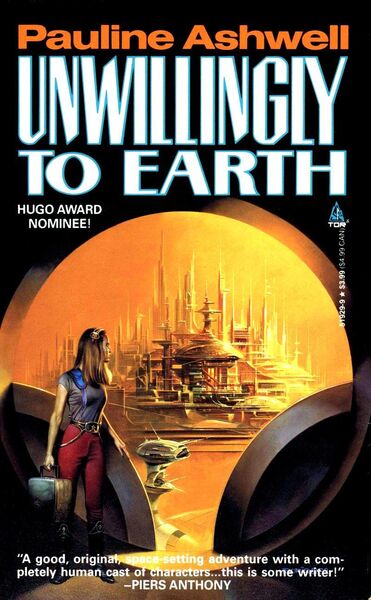
A teenager's social engineering skills are harnessed for good.
Unwillingly to Earth by Pauline Ashwell
The first dinosaurs might have been bigger than expected
Jul. 17th, 2025 08:50 amMuseum study shows human impact on chipmunks and voles in Chicago
Jul. 17th, 2025 08:50 amNickel catalyst opens door to sustainable, branched hydrocarbon fuels
Jul. 17th, 2025 08:45 amPigment researchers create vivid yellows, oranges, reds that are durable, non-toxic
Jul. 17th, 2025 08:40 amNew copper alloy shows shape memory effect at -200°C for space use
Jul. 17th, 2025 08:40 amHeat and smart mixing boost enzymatic recycling of unsortable polyester plastics
Jul. 17th, 2025 08:25 amGalaxy cluster Abell 3558 has a peculiar mini-halo, observations suggest
Jul. 17th, 2025 08:00 amIt’s a bird! It’s a plane! – DORK TOWER 14.07.25
Jul. 14th, 2025 05:00 amWith thanks to my pal Dan Taylor for the inspiration!
This or any DORK TOWER strip is now available as a signed, high-quality print, from just $25! CLICK HERE to find out more!
HEY! Want to help keep DORK TOWER going? Then consider joining the DORK TOWER Patreon and ENLIST IN THE ARMY OF DORKNESS TODAY! (We have COOKIES!) (And SWAG!) (And GRATITUDE!)
The Girls Got Spayed Yesterday
Jul. 17th, 2025 11:39 am
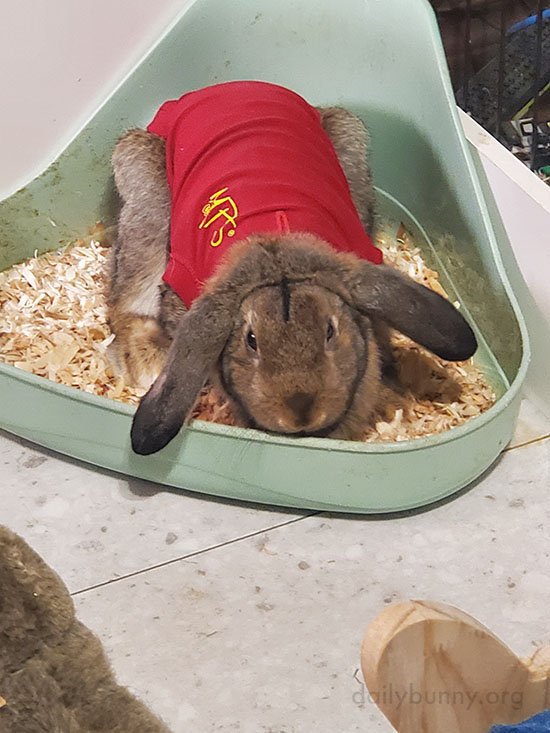
Thanks, Chris and bunnies Oats and Ale! Chris writes, “I just got back from the vets from there surgery and they did very good. They were very good patients. Oats and Ale are resting right now. I am sure they will be back to their hoppy selves soon. Here are some pictures.”


